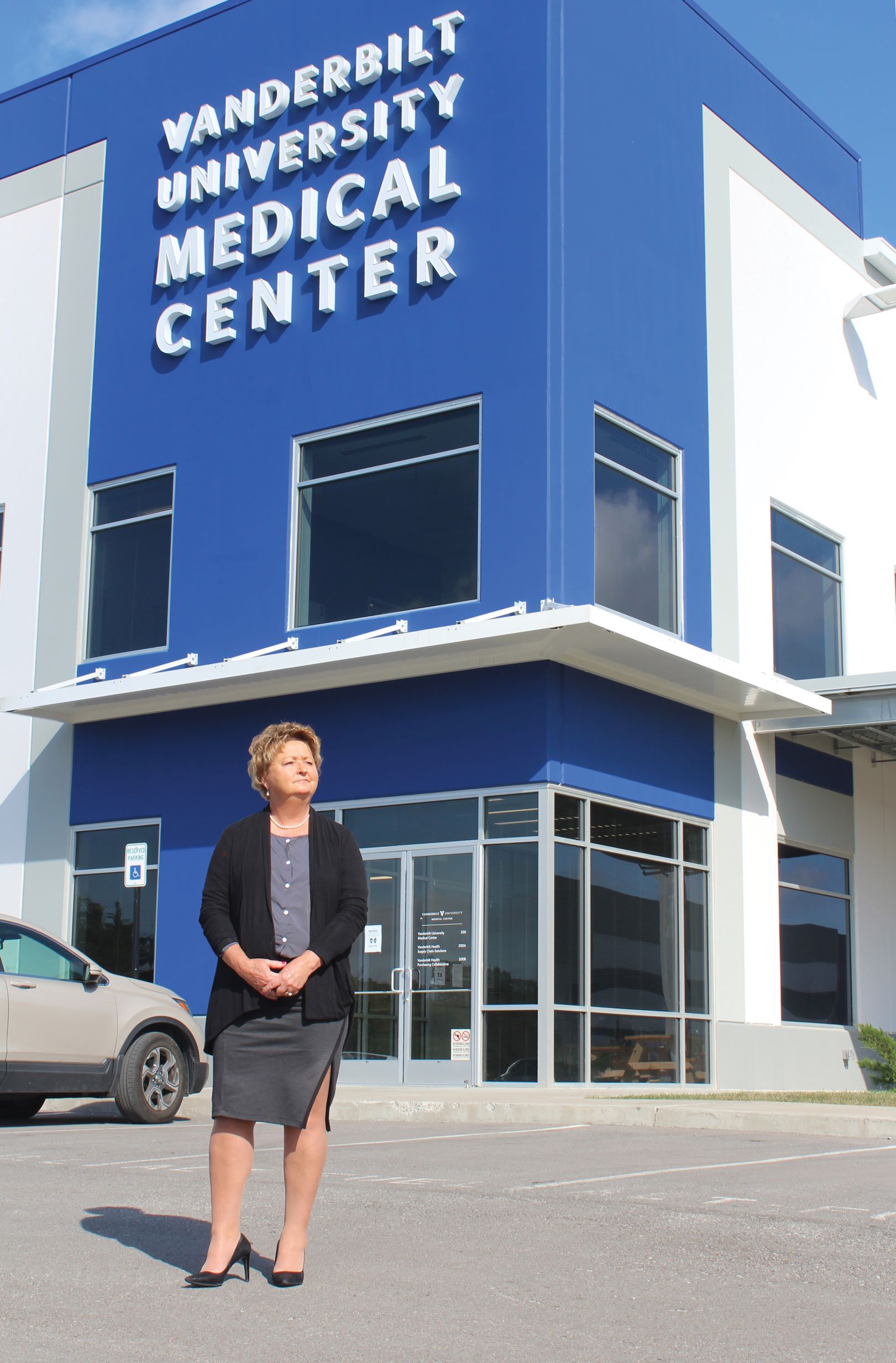Reimagining the healthcare supply chain to bolster resilience and efficiency
In response to the COVID-19 pandemic, supply chain leaders are considering new approaches to sourcing, inventory management, analytics and technology.

When it comes to supply chain management during the COVID-19 pandemic, Régine Villain and her team have a motto: “We fill the hands that heal.”
Villain is senior vice president of the supply chain network and chief supply chain officer at Ochsner Health outside New Orleans. As the city became an early COVID-19 hotspot, her group hustled to ensure clinicians had the instruments and gear they needed to do their jobs safely and effectively.
“That’s an awesome responsibility that we take very seriously,” she said.
Meeting that responsibility became daunting for healthcare supply chain leaders starting in January, when the novel coronavirus began to spread widely in China. The disruption in that country put key supplies — notably personal protective equipment (PPE) and ventilators — at risk for U.S. hospitals. News coverage highlighted shortages and painted a dire picture of frontline COVID-19 care in some places.
Villain and other supply chain leaders have been innovating in search of solutions. Along the way, they have raised questions about certain longstanding principles, suggesting that perhaps less emphasis should be placed on cost control and standardization in the supply chain.
Most important, the changes they’re driving will put hospital and health system supply chains in a stronger position to handle future spikes of COVID-19 along with other public health emergencies.
Shoring up supply sources
Villain has more than 25 years of experience in her field and currently serves on the board of the Association for Health Care Resource & Materials Management. When the pandemic struck the U.S. about a year after she joined Ochsner Health, her supply chain organization worked to establish and strengthen internal and external relationships.
Vendor partners agreed to go beyond simply providing a product. They integrated Ochsner into their own supply chain processes.
“We became an extension of their processes so we could avail ourselves of the supplies that we needed,” Villain said. “And they completely opened themselves to being transparent.”
Such transparency can be contractually obligated, said Karen Conway, vice president for healthcare value with GHX.
“When you’re negotiating with vendors, you want to understand whether they’ve mapped out and created contingency plans for their own supply chain risk,” Conway said.
Other sourcing considerations and practices that have emerged during the pandemic cover the following areas.
Getting creative with partnerships. In Nashville, Vanderbilt University Medical Center (VUMC) was short on hand sanitizer during the early stages of the pandemic. The Jack Daniel’s whiskey manufacturing plant in nearby Lynchburg, Tennessee, converted its operations to making sanitizer and provided several barrels to VUMC. The health system then bottled and labeled the product.
“It was 80% alcohol,” said Teresa Dail, VUMC’s chief supply chain officer. “Who can sneeze at that?”
Close collaboration with clinical leaders is crucial when evaluating new sources of supplies. During the pandemic, for example, supply chain leaders have worked with infection control specialists to verify the safety and efficacy of PPE.
“You want to have clinical evidence to help determine if [a product] can also be used for this same function or has the right clinical attributes,” Conway said.

Ensuring geographic diversity in sourcing. The healthcare industry should provide incentives for manufacturers to establish domestic outposts for vital supplies, thereby negating some of the risk that stems from relying on overseas locations, several stakeholders said.
One downside: Prices of PPE and other equipment likely would rise in such a scenario.
“I’m willing to say it’s worth it for me to have quality products available to us, to help us protect our staff and take care of our patients,” Dail said.
Striving for a holistic perspective. Compared with healthcare, some industries have much more comprehensive lines of sight into the manufacturing chain, said Steven Huckabaa, vice president of supply chain at Vidant Health, a 1,450-bed health system headquartered in Greenville, North Carolina.
A supermarket supply chain executive, for example, most likely negotiates contracts with manufacturers, producers of raw goods and logistics entities.
“Everybody’s in line with what they’re attempting to do,” Huckabaa said. “Everybody’s got a stake in the game and that process. Healthcare is not that way. It’s splintered.”
At the very least, he said, provider organizations should work to understand precisely where products and parts are manufactured. Then when any issue crops up, they can react quickly.
Supply chain issues by the numbers:
The number of executives with leading provider and supplier organizations who said inability to source supplies of personal protective equipment has been the biggest supply chain challenge related to COVID-19 (respondents were limited to one selection): 76
Other responses
- Bidding wars and price gouging: 32
- Finding and vetting nontraditional suppliers: 30
- Securing quality/authentic product: 25
- Internal information and communications management: 21
The number of executives with leading provider and supplier organizations who said more prioritization of products produced in the U.S. will be the biggest impact on the supply chain post-COVID-19: 122
Other top responses (respondents could select any number of options):
- More inventory and demand-planning data sharing between providers and suppliers: 117
- Less reliance on just-in-time/more safety stock: 107
- More investment in inventory visibility across individual health systems: 101
Source: Association for Healthcare Resource & Materials Management (AHRMM) webinar, June 2020. Total number of respondents: 200+.
Deploying new tactics in inventory management
Supply chain leaders are reconsidering the industry-standard just-in-time inventory model, which dictates that supplies be delivered essentially on a daily basis to sites across a health system.
The approach is popular because it keeps down costs and does not require a vast infrastructure to accommodate bulk distribution, but it leaves organizations vulnerable to disruptions.
At the start of the pandemic, VUMC set up its own warehouse and started a self-distribution program for supplies that its analytics suggested could be in jeopardy.
Going forward, Dail said, “We’re going to keep some of that stock on hand as safety stock for ourselves.”
In implementing such approaches, supply chain leaders are reevaluating commonly accepted tenets in the following areas.
Costs. Cost concerns have become increasingly urgent in healthcare, never more so than during the pandemic. But those considerations shouldn’t always prevail in supply chain strategy.
“We need to look at what we’re actually using and what impact that’s having on first the quality and then the cost of delivering care,” Conway said. “If you’re measuring your supply chain [only] on the ability to lower the overall supply expense, it puts us at risk. It has also led historically to a lack of investment in supply chain capabilities like inventory visibility.”
Standardization. The concept of physician preference items stems from the notion that product standardization leads to the best outcomes. But after the pandemic took hold, Vidant Health introduced more variability into its supply chain, Huckabaa said.
“We have to take a step back and [ask] what’s most important, standardization or ensuring that we have a viable product,” he said.
Most physicians and nurses willingly use alternative products that are FDA-approved and have gone through rigorous internal reviews, he added.
Competition. Hospitals are used to vying for market share, but cooperation among organizations has been vital during the pandemic and will be necessary to fortify the global supply chain. Collaboration especially is important for smaller and more remote hospitals.
Said Conway: “Can you find other hospitals, or can you work with a distributor that is working with multiple hospitals, and together you’re pooling your resources so that everybody can share the costs of the warehouse and [of] holding and rotating the stock before it expires?”
Working with the government to boost supply levels
Hospitals and health systems should understand how the federal government can best assist their efforts to buttress stocks of key supplies, says Todd Nelson, HFMA’s director of partner relationships and chief partnership executive.
In a Q&A, Nelson reflected on the highlights of a meeting he had in August with leaders of the White House Supply Chain Task Force.

Q: What key points did you take out of the meeting?
They’ve assembled a pretty amazing team to try to help folks get personal protective equipment [PPE]. They’ve got a group of leaders from the military who are highly skilled at logistics and work immediately with suppliers and distributors on any leads they get.
The second part is, if people have concerns or needs, make sure they let somebody know. They can certainly let us know at HFMA, and we can connect them to the folks that have the PPE to dole out.
Finally, they’re trying to get visibility into what the PPE levels are at hospitals and organizations. They have a primary source, which is the CMS-related portal for folks to submit data. And they know it’s a lot of data, but the more information they have, the better they can anticipate demand and deliver supplies where needed.
Q: What about developing long-term solutions?
That communication back and forth between government and providers and rethinking for the future is going to be really critical. We’re taught to not have large levels of inventory on hand because that’s essentially cash just sitting there, not being utilized. But we’re going to have to rethink the process with local, state and national government as to how we develop plans in case of a pandemic — how we rotate stock and build resilience in the supply chain.
Becoming more data-driven
In supply chain management efforts at Ochsner Health during the pandemic, data has been “king,” Villain said.
“The embedding of data in a way that we have not seen before, allowing us to forecast and to make sure that we’re addressing demand, is certainly something that I think we’re going to see more of,” she added.
In more rigorously applying data and analytics to supply chain concerns, leaders are considering various processes.
Obtaining necessary data. Vital data must come not only from internal sources, but from manufacturers. “When something global like this [pandemic] happens, we’re flying blind,” Dail said. To perform predictive modeling, she added, providers need information on which components from which supplies are manufactured in which parts of the world.

“I might also give preference to a vendor who is going to be more transparent in sharing data,” GHX’s Conway said.
Integrating data with user workflows. Improving supply chain analytics requires an organization’s information services team to provide more easily accessible data, with an appropriate vendor tool then helping with data mining, Vidant Health’s Huckabaa said.
“If we have to go grab data, like what we had to do [during the pandemic], it takes a long time for us to turn that data in the system if it’s not readily available at the push of a button,” he said.
“My team is spending more time trying to get the data, normalize the data and make the data presentable as opposed to having already done all that electronically.”
Performing robust calculations. At VUMC, Dail and her team developed a customized PPE calculator. Clinical feedback helped with time studies and mappings of PPE utilization for COVID-19 patients in the ICU and the med-surg unit, as well as in the emergency department and operating room and at the organization’s COVID-19 testing and assessment sites.
Those standards are built into the calculator, along with the number of potential encounters per day for an inpatient stay. The supply chain team can input patient volumes based on either the current census or a projected number and compute how much PPE will be needed for each product category during 30-day intervals.
“We’ve based our entire plan on buying PPE over the next six months just around that modeling,” Dail said.
Supply chain issues by the numbers
$3.3B is the projected value of global healthcare supply chain management in 2025, up from $2.2 billion in 2020, according to a MarketsandMarketsTM report issued in March. The projected compound annual growth rate is 7.9%.
$25.7B is the savings opportunity per year for hospitals from reducing variation and waste in the supply chain, according to a 2019 Navigant report. (In the wake of COVID-19, stakeholders say some variation is necessary.)
Embracing technology and innovation
Villain said supply chain organizations should tap into the so-called Internet of Things (IoT) more extensively than they have. IoT connectivity allows hospitals to better track products throughout the supply chain, from shipping all the way to the point of care.
Said Villain: “How do we create seamlessness across the board utilizing systems and things that are already available to consumers to create a more connected supply chain organization?”
More fundamentally, Villain envisions Ochsner Health’s supply chain operation expanding to become what Vidant Health’s Huckabaa described as ideal: a true network that encompasses providers, suppliers, distributors and other entities.
Participants will be willing to take on more risk “and open themselves up to each other more so than we’ve ever done,” Villain said. “We’ve talked about doing that before, but I think this is showing that it’s truly important for us to create that continuity across the supply chain network.”
That’s because crises have a way of changing attitudes and kickstarting innovation, Huckabaa said. “It’s moving this industry closer to where we should be.”





